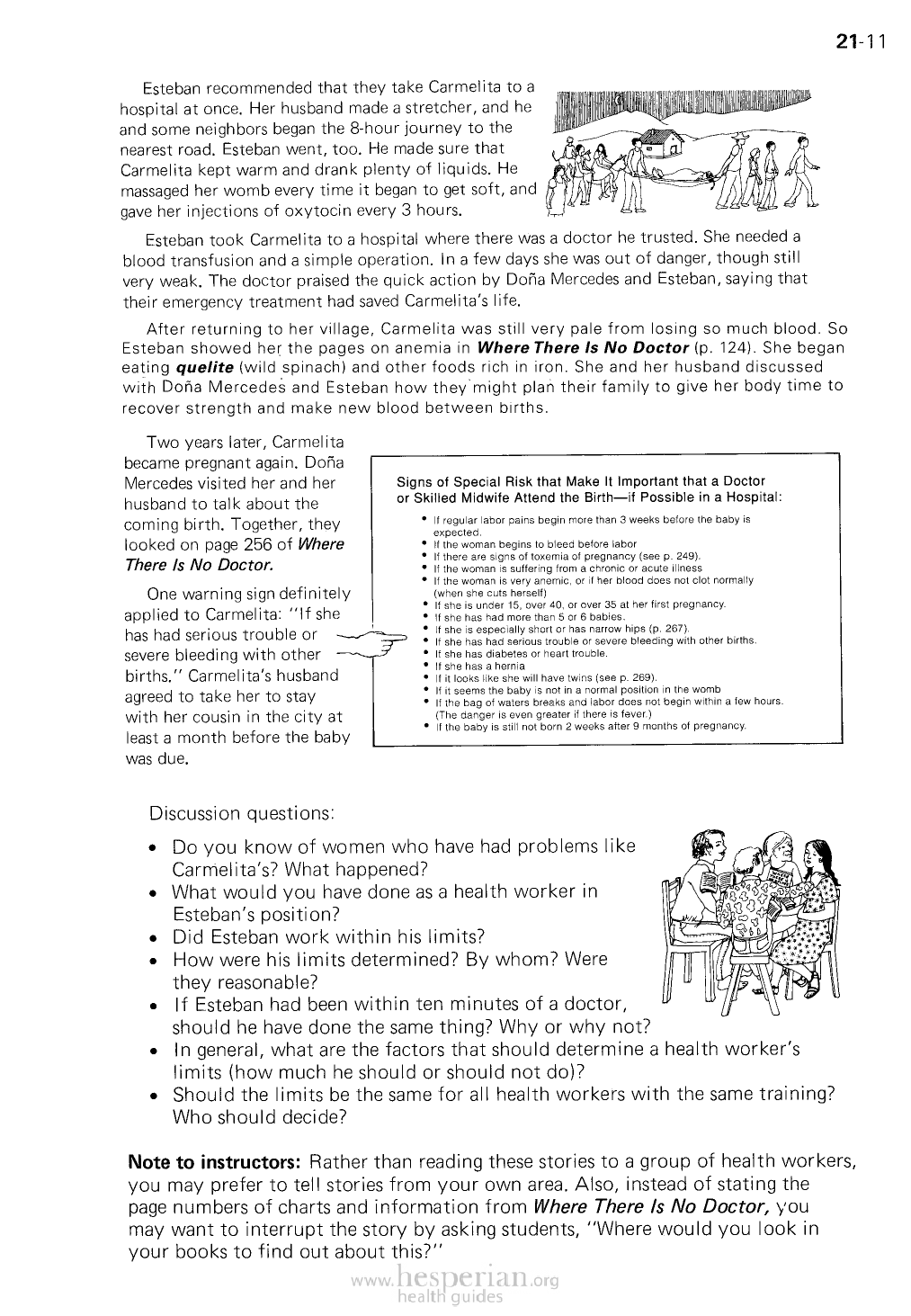
21-11
Esteban recommended that they take Carmelita to a
hospital at once. Her husband made a stretcher, and
he and some neighbors began the 8-hour journey to
the nearest road. Esteban went, too. He made sure that
Carmelita kept warm and drank plenty of liquids. He
massaged her womb every time it began to get soft, and
gave her injections of oxytocin every 3 hours.
Esteban took Carmelita to a hospital where there was a doctor he trusted. She needed a
blood transfusion and a simple operation. In a few days she was out of danger, though still very
weak. The doctor praised the quick action by Dona Mercedes and Esteban, saying that their
emergency treatment had saved Carmelita’s life.
After returning to her village, Carmelita was still very pale from losing so much blood. So
Esteban showed her the pages on anemia in Where There Is No Doctor (p. 124). She began
eating quelite (wild spinach) and other foods rich in iron. She and her husband discussed with
Dona Mercedes and Esteban how they might plan their family to give her body time to recover
strength and make new blood between births.
Two years later, Carmelita
became pregnant again. Dofia
Mercedes visited her and her
husband to talk about the
coming birth. Together, they
looked on page 256 of Where
There Is No Doctor.
One warning sign definitely
applied to Carmelita: “If she
has had serious trouble or
severe bleeding with other
births.” Carmelita’s husband
agreed to take her to stay with
her cousin in the city at least
a month before the baby was
due.
Discussion questions:
• Do you know of women who have had problems like
Carmelita’s? What happened?
• What would you have done as a health worker in
Esteban’s position?
• Did Esteban work within his limits?
• How were his limits determined? By whom? Were
they reasonable?
• If Esteban had been within ten minutes of a
doctor, should he have done the same thing? Why or why
not?
• In general, what are the factors that should determine a health worker’s limits
(how much he should or should not do)?
• Should the limits be the same for all health workers with the same training?
Who should decide?
Note to instructors: Rather than reading these stories to a group of health
workers, you may prefer to tell stories from your own area. Also, instead of stating
the page numbers of charts and information from Where There Is No Doctor,
you may want to interrupt the story by asking students, “Where would you look in
your books to find out about this?”